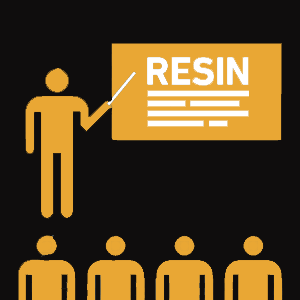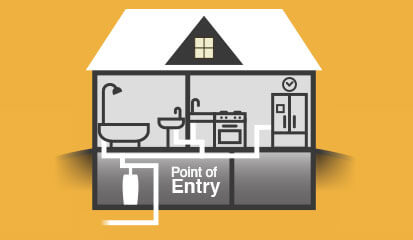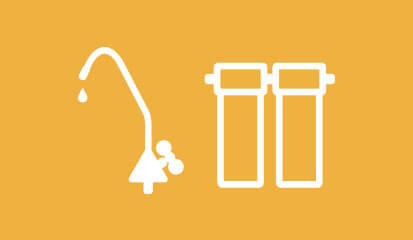Water Softener Terms for New Shoppers
Water softener terms for new shoppers
Know these words to make selecting a softener a cinch
Whether you’re in the aisles or scrolling online, water softeners have a language all their own. To choose the right system for your home, know these key terms before you start your research.
The Basics
Hard Water: Hard water contains high concentrations of calcium and magnesium. As water trickles through rocks, limestone deposits and soil, it picks up these minerals. Depending on how long the water travels through the ground before reaching your tap, it can pick up a lot of these minerals, making water harder in some regions than others.
Grains per gallon: Often noted as gpg, grains per gallon is the unit of how water hardness is measured. This is defined as one grain (64.8 milligrams) of calcium carbonate dissolved in one gallon of water. For example, one aspirin is equal to 5 grains, and when dissolved into a gallon of water, the unit of measure would be reported as 5 grains per gallon. Soft water is less than 1 gpg, whereas hard water is about 10 gpg or higher.
Parts per million: While less likely, you may also find hardness measured in parts per million (ppm), and 1 gpg is equivalent to 17.1 ppm. When iron is present in water, it is usually measured in parts per million (ppm) and seen in concentrations of 10 ppm or less. Concentrations of clear water iron as low as 0.3 ppm will leave reddish brown stains on fixtures, tableware and laundry that can be very difficult to clean. Whirlpool water softeners are equipped to remove varying ranges of clear water iron, keeping the rings off of your toilets, sinks and showers.
Capacity: A water softener’s size, often measured in gallons or grain capacity, takes into account the number of people in the household, the average water use per person, and the hardness of your water. The more people and water used, the larger the capacity the water softener should be.
Regeneration: This is the process of recharging the resin after it has exchanged all of its sodium ions for calcium and magnesium from hard water. All water softeners using the ion-exchange process regenerate using the same principles. For a closer look at the regeneration process, visit this page.
Timer-based regeneration: These water softeners regenerate on a predetermined schedule that you will set. These models aren’t ideal if you want the most efficient softener. If you underestimate your usage, your water softener will regenerate too infrequently. Overestimating your water use will result in unnecessary regeneration that wastes energy and water.
Demand-initiated regeneration: Sensors in this system monitor water usage. When the resin is full of hardness minerals, the softener regenerates on its own. This softener works on an as-needed basis, and some advanced models can learn your water use patterns to further optimize regeneration frequency. All Whirlpool water softeners are demand regenerated.
Single-tank cabinet water softener: This compact, space saving system has the brine tank and resin tank contained in a single cabinet. “On-demand” single tank softeners monitor how many gallons of water you use. Once you reach capacity, the softener will regenerate in the middle of the night, avoiding the possibility of running out of soft water.
Twin-tank (dual-tank) water softener: A dual-tank water softener has two resin tanks, so when one tank is in use, the other can regenerate. This model requires more floor space to accommodate the larger size and is often more expensive than single tank systems. If you have a large family and use a significant amount of water throughout the entire day, you may want to invest in a twin-tank model.
Upgrades and Features to Consider
Water Refiner (softener and filter in one): In addition to softening your water, this multi-tasking system has built in whole-home filtering for the purpose of removing or reducing the chlorine, impurities, tastes and odors from water. And as an added benefit, these types of systems do not require you to replace any filters for the life of the softener.
Sediment filter: This feature ensures any lingering silt and sediment is removed from your water before entering the water softener. Too much sediment in water can cause muddying in the softener, which can cause premature damage. This can also cause buildup in your pipes and other water using appliances.
Blending valve: For people who don’t care for the slick feel of completely soft water (which is actually just the skin’s natural oils that haven’t been stripped away by hard water), this allows some of the hardness minerals to remain. Completely softened water is usually zero gpg, but this accessory makes your water about two gpg—just enough to take the slick edge off.
Armed and ready with the basics
Knowing your water softener vocabulary will make selecting the perfect solution for your home a breeze



